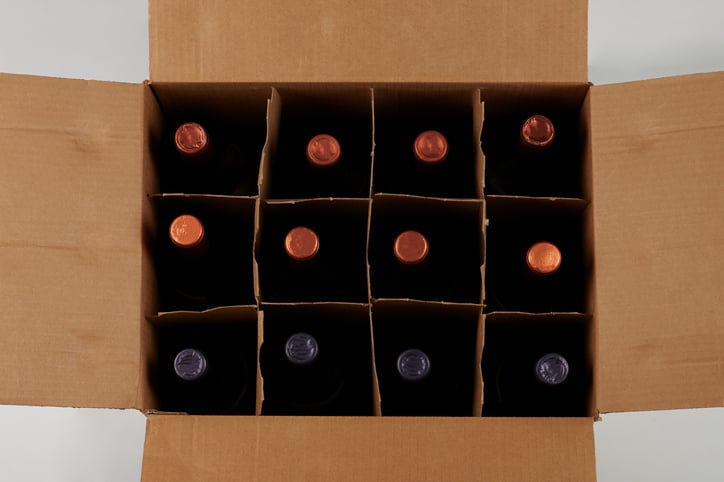The Monthly Metric: Fill Rate

Order delays that have plagued companies for much of the coronavirus pandemic, and degree of recent relief varies by sector and industry: In the June editions of the ISM® Report On Business®, the Manufacturing Backlog of Orders Index decreased but
The most vivid examples of easing backlogs are found in the reports and images of the glut of inventory at such store chains as Walmart and Target, resulting in surplus merchandise and big discounts. The story is different in health care, as an Institute for Supply Management® Hospital Business Survey Committee respondent wrote, “Fill rates are down significantly, even though receiving activity levels remain up. (That’s because) we’re receiving multiple shipments to fulfill order requirements.”
As this space has discussed often during the last 2½ years, few dynamics of supply management have been impacted by COVID-19 more than inventories. And with backlogs and back orders still top of mind for many supply managers, this edition of The Monthly Metric focuses on the analytic that helps determine when they happen: fill rate.
As well as being a measurement of order fulfillment success and customer satisfaction, fill rate — order and volume — provides a window to a company’s inventory management, cash flow and overall efficiency, says Tracey Smith, MBA, MAS, CPSM, president of Numerical Insights LLC, a boutique analytics firm in Williamsville, New York.
“It allows you to better target the products that are going out of stock,” Smith says. “You can take a deeper dive and see the sales channels that might be giving higher order volatility. That’s important now because many companies took a hit on fill rates and increasing back orders, especially those with raw materials from China. For some industries, the backlogs are decreasing. But others, like electronics, are still feeling pain.”
Meaning of the Metric
Fill rate measures the percentage of orders that are successfully shipped, and it can be measured in two ways — and from two perspectives. Order fill rate measures complete shipments and is customer-centric; volume fill rate is a unit-by-unit gauge that is most useful for inventory planning. “I don’t think many companies measure both,” Smith says, “but I like to show both to clients because they do give a fuller picture.”
If five customers order 12 widgets each from a company that has 53 units in stock, four orders can be successfully shipped, for an order fill (and happy customer) rate of 80 percent. For the remaining order, five units are available, but the other seven must be back ordered.
For an example of volume fill rate, return to those five remaining widgets. The company could wait to ship to the fifth customer until a full order is ready. If so, the volume fill rate is also 80 percent (48 units shipped out of 60 ordered). If it sends the five widgets in stock, the volume rate is 88 percent (53 out of 60).
The above example is not a bad case of inventory management and demand planning. During peak order times like the holiday season and Amazon Prime Day, company inventories can be short by cases, not units, driving volume fill rates below 50 percent. Such volatility has been intensified by the supply shortages and long lead times precipitated by COVID-19.
“As we all know, companies have tried to increase their orders and plan ahead to try to hedge against being out of stock,” Smith says. “Manufacturers got sudden and unexpected high orders from retailers that didn’t want to stock out. The demand fluctuation got much higher and created a bullwhip effect that raises the volatility for almost everybody.”
In “normal times,” as Smith called pre-pandemic conditions, fill rate typically is calculated monthly, quarterly or even yearly. However, increased availability of data has made more frequent monitoring possible — and during COVID-19, it’s been a necessity.
Not Perfection, But Prioritization
Smith says fill rates between 85 and 95 percent are typical benchmarks, with high-performing companies exceeding 95 percent. A perfect order fill rate isn’t ideal because it likely suggests excess inventory — which comes at a cost of keeping, and cash flow that a company cannot use elsewhere.
The more items a company sells, the more challenging it is to maintain ideal overall fill rates. However, rates for each product can help a company determine breakdowns in supply or inventory management, says Smith, who often advises clients to identify the most troublesome components for potential alternate sourcing or boosting of safety-stock levels.
Demand volatility can be an even bigger conundrum. One of Smith’s clients sells to multiple continents, and while North American orders are consistent, those from Europe and Africa are typically larger and more sporadic because companies want to limit freight costs. Such large orders, when unexpected, can deplete inventory, leaving the client to pick where on the map shipments will be delayed — and customers disappointed.
“If the company wants to make international customers happy and allow them to optimize freight costs, it has to disappoint North American customers,” Smith says. The client has tried to increase safety stocks on its most popular products, but “there can still be tough decisions to make,” she adds. Some companies try to negotiate with customers to accept lower volumes, enabling greater order fulfillment.
With the pandemic continuing to wreak havoc on shipments and inventories, fill rates will remain frequently and closely monitored. “Some companies are still struggling, but others are in various stages of recovery, with back orders coming down,” Smith says. “And then there’s retail, which has too much inventory and is offering bargains.”
To suggest a metric to be covered, email me at dzeiger@ismworld.org.
(Photo credit: Getty Images/Dimarik)


